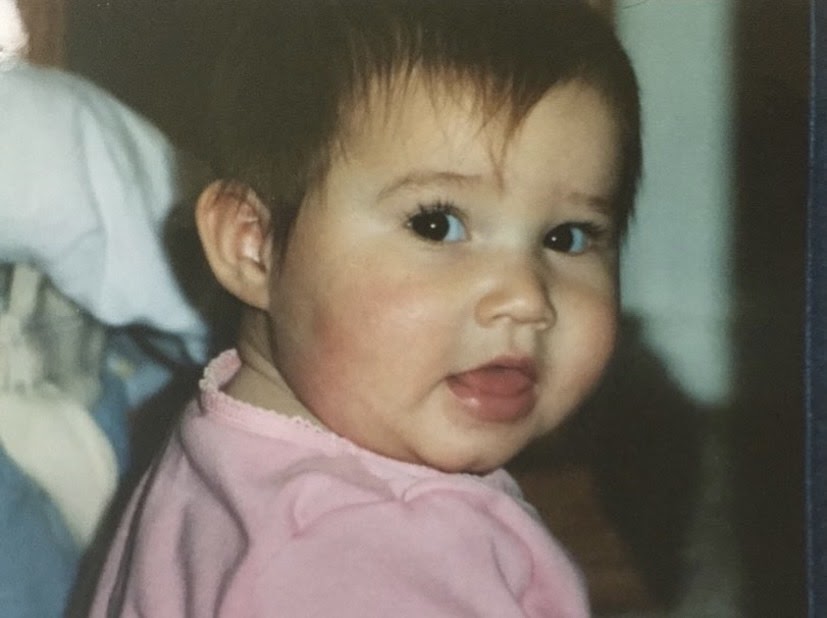Girls Wear Pink
Growing up gay in a culture-changing world, she realized her biggest obstacle was her family.
On a foggy morning walk to school, 13-year-old Lauren Vargas saw something that changed her life forever. Walking to class on the cracked pavement, hopping over curbs and stepping on every individual fallen leaf, she sees two girls a grade above her, holding hands and kissing.
“I have never had a girlfriend but I knew at that moment that I liked girls,” Vargas said.
Only a man could provide. This was one of the many mentalities her parents raised her with. Growing up in a traditional, God-fearing American household, she fought with herself, debating whether or not her feelings were normal.
Despite knowing how negatively her parents would react, Vargas fed her curiosity as she found herself searching for this pair of girls each day at school. Whenever she saw them walking to class, eating lunch or hanging out after school,she noted how happy they looked, and how they seemed no different than any other pair of teenagers in love. Quickly, her curiosity turned into a mission to befriend them. Before she knew it, she was exposed to a whole different set of values that she never knew existed. It was okay to like girls the couple explained to her. It could be real even if people try to tell you it’s not.
Vargas recalled being intrigued but overwhelmed. She wondered why she couldn’t shake these feelings. She wondered why other girls her age were boy crazy, while she was worried sick about her occasional girl crush and how her parents would react. While most teenagers could vent to their closest friends or even their family about who they were swooning after, she had no one to air her frustrations to. This is when her self-harm began.
“I was angry. I was in seventh grade when I started. I was angry at myself. Angry that I couldn’t just like boys. Angry that my parents wouldn’t accept me. It ended up just becoming a ‘fuck you’ to both me and my parents, but it started because I heard it helped other people with their problems, so for a while I was convinced it would help mine,” Vargas said.
Only a man should provide. Girls shouldn’t have short hair. Only dikes wore tank tops to school. It’s just a phase. Girls shouldn’t be with girls. It just makes sense, doesn’t it? Thoughts like these would run rampant in her mind nearly every day, fueling her anger more until she met a girl who liked her back.
Her first relationship in high school was with a girl. Vargas noted how it was different from boys she had gone on dates with in the past, or held hands with at recess. Something about being with this girl felt more real. She knew now that her feelings were real. She knew this wasn’t just something in her head, so she decided to tell her parents. However, like many traditional parents who grew up within a religious culture, they denied her claims.
Their reaction was everything Vargas expected. They were angry, they took away every form of communication she had; they forcibly made her watch sermons online to ‘fix’ her, tracked her every move, put her in therapy and made her break up with her girlfriend. They rejected her coming out and it only made her self-harming worse.
“Of course I was mad, but a part of me wanted them to be right. I tried to suppress my feelings,” Vargas said. “I would only date boys. I made sure I had a male date to every school dance. I wanted to make my parents happy, I wanted to feel normal but it only made me depressed.”
After three more years of high school, fully figuring out her sexuality and regaining her parents’ trust, she decided to come out to her parents for a second time in her senior year. Though still rough, Vargas found her parents’ main concerns were from the outside world. They didn’t want their daughter to be ostracized–not cared for or treated differently–but as an adult they accepted her decision and took her seriously this time.
Vargas endured a lot of remarks and questioning from her family but was happy that after years of warming up the idea to them; they were finally able to accept her. A notable experience of working up conversations about being gay in her family was when she decided to take her family to see the 2016 film, “Love, Simon” without telling them what it was really about.
They knew they were walking into a coming of age romantic comedy but what they didn’t know was that this romcom centered around a gay main character, and his struggles navigating love in high school. Expectedly, her parents were angry. Vargas recalled their jaws dropping wide open when the plot of the movie was revealed; but that movie became a gateway to many more conversations between her and her family.
Vargas did not come to the conclusion that she was bisexual lightly, but after years of focusing on herself, she was able to stop her self-harm and begin to publicly express to others her truest form of herself. Vargas felt lucky that her family came to terms with her sexuality, however, it didn’t begin until she came to terms with it herself.
“After dating both boys and girls, it was as if when I dated a guy I could see myself with a man in the future but when I dated a girl, I could see myself with a woman in the future. I knew at some point, there was no point in fighting who I was anymore.”



